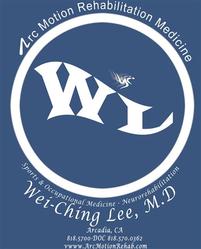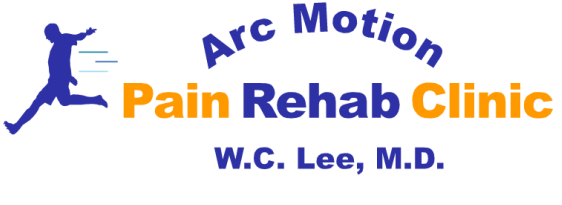_Overview of Low Back Pain

_
(article from AAPM&R)
Developing a Program That's Right For You
Information is readily available on the way to stop back pain. The challenge is to tailor it to the particular patient. For example, it's often said that swimming is good for the back. But which stroke? And how often?
Strengthening the abdominal muscles is also commonly ordered for low back pain. But how is this done? And are you exercising the proper way for your back injury? The list goes on: cold or hot applications, rest or activity?
What Kinds of Problems Might Cause Low Back Pain?
Treatment for any back condition is recommended as soon as possible to minimize the danger of further aggravation. The following is a list of only some of the conditions that may cause low back pain and is not a substitute for a visit to your doctor:
Radiculopathy - A pinched nerve, also called sciatica, usually from a herniated, or slipped, disk. This can cause a shooting pain down the leg that's often described as an electrical feeling.
Myofascial Pain - Generally an aching pain in muscles that tends to come from poor posture, sitting at a computer, or other job-related tasks. With myofascial back pain, the patient can become sore in different parts of the body like the back and legs. Often patients report that they have difficulty sleeping or feeling restored from sleep.
Spinal Stenosis - A narrowing of the nerve openings either around the spinal cord or nerve roots that can cause symptoms similar to a pinched nerve. It can cause leg pain in anyone, but most often does so in older people. Patients with spinal stenosis can have trouble walking, and the difficulty is usually relieved by sitting down or bending forward. It can cause aching or heaviness in the back and legs.
Tendon, Ligament and Soft Tissue Pain - Localized pain when an area is stretched or its muscles are overused. This results in tenderness.
Non-Spinal Causes of Low Back - Pain Pain imitating a back injury, but from another cause. Appendicitis, kidney disease, uterine disorders and urinary tract infections are a few examples of problems that can refer pain to the back.
Treatment Options
The rehabilitation of low back problems occurs in three phases. During the first phase, called the acute phase, physiatrists treat pain and inflammation. After they make a specific diagnosis and develop a treatment plan, physiatrists may offer treatment options like ultrasound, electrical stimulation, mobilization, medication, ice and even specialized injections.
In the second, or recovery, phase of treatment, flexibility and strength are developed to get the body parts into their proper positions. The goal of this phase is to get you back to your usual work, sports and leisure activities. This goal is achieved through specially designed exercises that rebuild the body.
The main goal of the third phase of treatment, the maintenance phase, is to minimize recurrence of the problem and to prevent further injury. This often consists of a total body fitness program, designed to maintain body mechanics and increase endurance after the original symptoms have resolved.
These are very broad and general approaches to the treatment of low back pain. The physiatrist will develop an individual treatment plan for you.
Developing a Program That's Right For You
Information is readily available on the way to stop back pain. The challenge is to tailor it to the particular patient. For example, it's often said that swimming is good for the back. But which stroke? And how often?
Strengthening the abdominal muscles is also commonly ordered for low back pain. But how is this done? And are you exercising the proper way for your back injury? The list goes on: cold or hot applications, rest or activity?
What Kinds of Problems Might Cause Low Back Pain?
Treatment for any back condition is recommended as soon as possible to minimize the danger of further aggravation. The following is a list of only some of the conditions that may cause low back pain and is not a substitute for a visit to your doctor:
Radiculopathy - A pinched nerve, also called sciatica, usually from a herniated, or slipped, disk. This can cause a shooting pain down the leg that's often described as an electrical feeling.
Myofascial Pain - Generally an aching pain in muscles that tends to come from poor posture, sitting at a computer, or other job-related tasks. With myofascial back pain, the patient can become sore in different parts of the body like the back and legs. Often patients report that they have difficulty sleeping or feeling restored from sleep.
Spinal Stenosis - A narrowing of the nerve openings either around the spinal cord or nerve roots that can cause symptoms similar to a pinched nerve. It can cause leg pain in anyone, but most often does so in older people. Patients with spinal stenosis can have trouble walking, and the difficulty is usually relieved by sitting down or bending forward. It can cause aching or heaviness in the back and legs.
Tendon, Ligament and Soft Tissue Pain - Localized pain when an area is stretched or its muscles are overused. This results in tenderness.
Non-Spinal Causes of Low Back - Pain Pain imitating a back injury, but from another cause. Appendicitis, kidney disease, uterine disorders and urinary tract infections are a few examples of problems that can refer pain to the back.
Treatment Options
The rehabilitation of low back problems occurs in three phases. During the first phase, called the acute phase, physiatrists treat pain and inflammation. After they make a specific diagnosis and develop a treatment plan, physiatrists may offer treatment options like ultrasound, electrical stimulation, mobilization, medication, ice and even specialized injections.
In the second, or recovery, phase of treatment, flexibility and strength are developed to get the body parts into their proper positions. The goal of this phase is to get you back to your usual work, sports and leisure activities. This goal is achieved through specially designed exercises that rebuild the body.
The main goal of the third phase of treatment, the maintenance phase, is to minimize recurrence of the problem and to prevent further injury. This often consists of a total body fitness program, designed to maintain body mechanics and increase endurance after the original symptoms have resolved.
These are very broad and general approaches to the treatment of low back pain. The physiatrist will develop an individual treatment plan for you.
